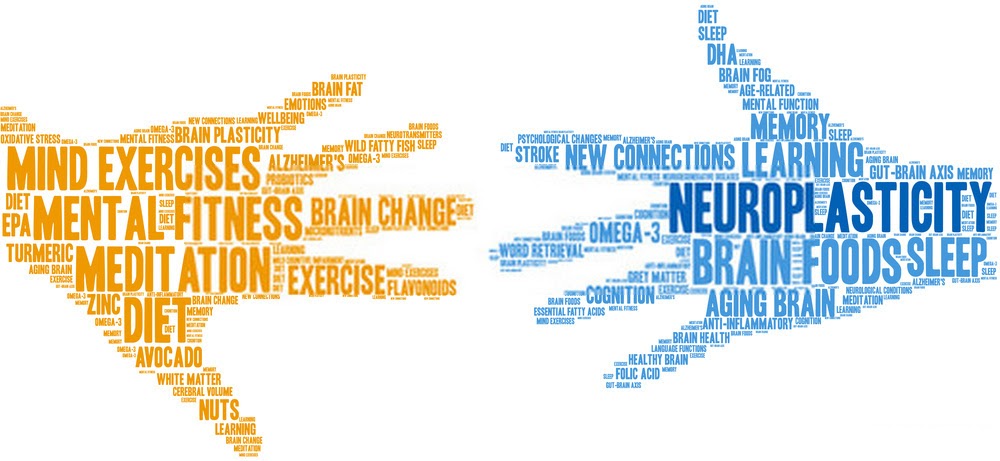Edition: September 25th, 2021
Curated by the Knowledge Team of ICS Career GPS

- Excerpts from article by Alexa V.S., published on medium.com
“With proper stimulation and an enriched environment, the human brain can continue to develop at any age.”
Marian Diamond, one of the founders of modern neuroscience
This is called Neuroplasticity. In simple terms, It’s the brain’s ability to continue growing and adapting despite aging. Even as adults, our brains continue to create neurons, which if properly stimulated — can strengthen our mental capabilities and sharpen our memories.
The brain has four main regions or lobes:
- Frontal
- Temporal
- Parietal
- Occipital
The last two perceive our surroundings, whereas the first two integrate and analyse the sensory information before making decisions.
To fully reap the benefits of Neuroplasticity, we must work on five different brain areas.
Here are the 5 brain areas that you need to work on, and how can you exercise them:
1. The Prefrontal Cortex: The Brain’s CEO
The prefrontal cortex is the brain’s CEO as it enables us to learn from our mistakes and make plans. When it’s healthy, we’re organised, goal-oriented, thoughtful, empathetic, and emotionally intelligent. We avoid saying or doing idiotic things. When it deteriorates, though, impulsivity, disorganisation, poor time management, lack of empathy, among other unwanted problems, arise.
How to exercise it:
- Language games (like Scrabble and Boggle)
- Crossword puzzles
- Public speaking activities (Speech and debate classes)
- Strategy games (like Risk, chess or Catan)
- Prayer and meditation (It may be the most powerful prefrontal cortex booster of all. It improves focus, executive function, judgment, and impulse control.)
- Weight training combined with aerobic activity (brisk walking)
2. The Temporal Lobes: The Brain’s Memory Centre
The temporal lobes have a crucial role when it comes to memories. They contain the hippocampi, that house the stem cells responsible for producing new neurons. If we exercise, include omega-3 fatty acids in our diet, engage in mental exercises, and have active social lives then new cells are produced.
However, without a nourishing environment, trouble can befall the temporal lobes, spelling doom. Damage in this area can lead to short and long-term memory problems, reading difficulties, an inability to find the right words in conversation, trouble reading social cues, and mood instability.
How to exercise it:
- 3D video games
- Intensive learning (a degree or a dedicated course)
- Memorisation (of poetry and prose)
- Learning to play a new musical instrument (which also stimulates the Prefrontal cortex, parietal lobes and cerebellum)
- Physical exercise
3. The Parietal Lobes: The Brain’s GPS
The top, back part of the brain contains the parietal lobes, responsible for our sense of direction and our ability to know right from left (our GPS) People with trouble in this area often get lost and find it difficult to track objects visually. Worst of all, though, is that people with damaged parietal lobes deny their problems. Those affected don’t recognise the danger they’re in.
How to exercise it:
- Math games (like Sudoku)
- Juggling
- Golf
- Dancing
- Map reading without a GPS device
4. The Occipital Lobes: The Brain’s Eyes
If you can read this, then your occipital lobes are fine. Located at the back of the brain, they process visual information. Light, shade, colour, and basic shapes are then sorted out. If there were trouble in this area, you would find it hard to discern colours, faces, and anything else in the visual realm.
How to exercise it:
- Golf
- Optical illusion exercises
- 3D movies
- VR (Virtual Reality) experiences
5. The Cerebellum: The Brain’s Coordinator
Though the cerebellum makes up only 10% of the brain’s volume, it contains 50% of its neurons. Not only that, but it’s involved in higher-level thinking like learning, language, judgment, and thought coordination. If damaged, a person can experience slower thinking, speaking and moving.
How to exercise it:
- Coordination games (like Table tennis)
- Dancing
- Yoga
- Tai chi
- Basketball
Creating ‘Whole-Brain Combination Workouts’
“We must exercise every inch of our brain.”
Dr. Daniel Amen, New York Times Bestselling author
To do that, select one exercise from each category. Or if you’re into efficiency choose fewer activities that engage several areas of the brain. A word of caution, though. The more you do something, the less it stimulates the brain.
“The best mental exercises involve acquiring new knowledge and doing things you haven’t done before.”
Dr. Daniel Amen, New York Times Bestselling author
In other words, no matter what you do, seek new and challenging activities. Your brain will thank you.
…
(Disclaimer: The opinions expressed in the article mentioned above are those of the author(s). They do not purport to reflect the opinions or views of ICS Career GPS or its staff.)
Like this post? For more such helpful articles, click on the button below and subscribe FREE to our blog.





Simple and practical exercises to enhance our latent brain power and potential – doable for all age groups!
Thank you for your encouragement, Dr Dass!